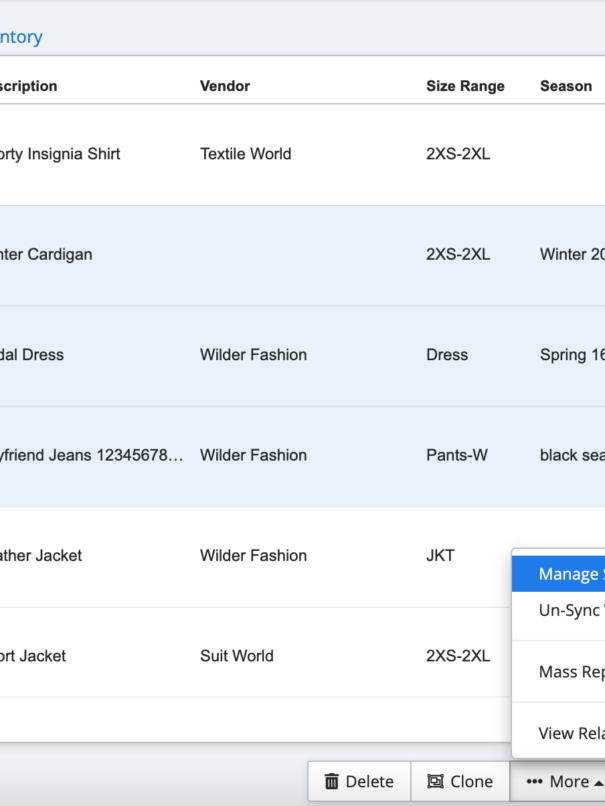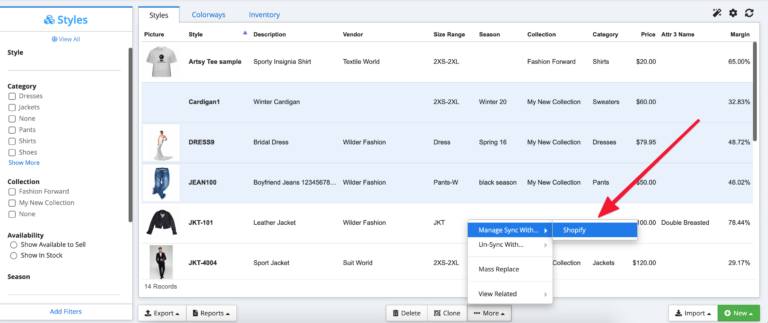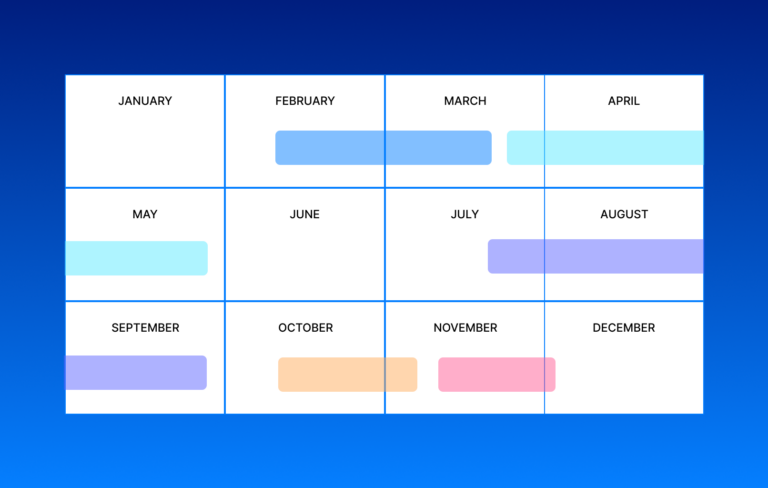The aftermath of the holiday season offers businesses a unique opportunity to leverage the wealth of data accumulated during this peak period. To make things easier, this is where enterprise resource planning systems become invaluable. By analyzing ERP data, companies can deeply understand customer behavior and market demands, evaluate sales performance, and streamline operations, setting the stage for strategic planning, enterprise and resource optimization, and planning and optimization for the next holiday season.
ERP systems, integral to modern business intelligence, offer a unified platform that integrates various business functions such as sales, supply chain management, and customer relations. This integration is crucial for businesses as it offers a holistic view of operations and facilitates data-driven decisions to optimize production processes. The role of the ERP system in business intelligence has evolved, becoming more sophisticated with advanced data analytics capabilities, which are essential in strategic decision-making. As a result, ERP systems have become indispensable for businesses aiming to leverage data for a competitive edge.
A key feature of ERP systems is the production planning management control module, which plays a pivotal role in optimizing the manufacturing process. This production planning module helps manage the production schedule, ensure the availability of raw materials, and adapt to changes in customer demand. For instance, the ERP production planning software can alert when raw material inventory levels are low, prompting timely reordering and preventing production delays.
In the context of production planning, ERP systems enable tracking and the production progress by analyzing various key performance indicators (KPIs) such as production output, quality, and efficiency. Businesses can generate reports to identify trends, bottlenecks, and improvement areas within the whole production planning process. For example, in a pharmaceutical manufacturing business, ERP for production planning can provide crucial data to optimize manufacturing, aligning the production process with market demand and regulatory requirements.
Moreover, ERP’s role in the manufacturing industry extends to integrating closely with supply chain management modules, ensuring a seamless flow of materials and information across different stages of production cycle operations and the entire manufacturing process.
With such wide benefits, the topic of ERP for production planning is well worth exploring in depth, so let’s dive in.
The Role of ERP in Business Intelligence
As we’ve established, these ERP software and systems are integral to modern business intelligence. They serve as comprehensive platforms that merge various business functions – sales, supply chain management, customer relations, and more – into a unified data source. This consolidation provides invaluable insights into every aspect of a business, making implementing ERP software and systems a cornerstone of effective business decision-making.
Furthermore, ERP systems have evolved significantly, integrating more sophisticated data analytics capabilities and playing a pivotal role in strategic decision-making. This evolution makes them indispensable tools for businesses aiming to leverage data for a competitive advantage. They provide organizations with a holistic view of their operations, enabling data-driven decisions, production planning, and quick responses to market changes.
They are also customizable to meet customer demands in different industries and organizational needs; they improve organizational efficiency, reduce costs, and enhance and improve customer service satisfaction.
They also serve as a central hub for information, automating and streamlining business processes. They house data from various departments—manufacturing, finance, operations, HR, sales, and marketing—in centralized repositories. This centralized data aids stakeholders in gaining useful cross-departmental insights, performing various financial management, inventory control, production planning activities, and generating process amendments, leading to efficient production processes and productivity gains.
The Importance of Post-Holiday Analysis
The post-holiday period is crucial for businesses to analyze data, particularly focusing on sales volumes, customer behaviors, and operational efficiency. This analysis is vital for identifying successful strategies and areas needing improvement.
Incorporating data from ERP for production planning is essential, as ERP systems can shed light on managing excess inventory and analyzing sales trends and the production planning processes. This integration aids in better preparing for future holiday seasons, ensuring that businesses are well-equipped to meet customer demand and operate efficiently.
Integration of Business Intelligence with ERP
Integrating business intelligence (BI) with ERP systems yields numerous benefits, revolutionizing business operations and strategic decisions. BI refers to technologies, applications, production processes, and practices for collecting, integrating, analyzing, and presenting business information, while an ERP system is a centralized platform that integrates various business functions into a single system.
- Enhanced decision-making: Combining BI and ERP enables access to real-time insights into business processes and performance, improving operational efficiency and customer satisfaction.
- Operational efficiency: BI analyzes data from ERP modules like sales, inventory, and production, identifying inefficiencies, optimizing processes, and reducing costs.
- Predictive analytics and ERP: The integration involves predictive analytics, using historical data and algorithms to forecast future trends and prepare for upcoming challenges.
- AI and ERP: Artificial Intelligence (AI) in ERP systems enables the processing and analysis of complex data sets, providing actionable insights for quick and effective decision-making .
Collecting and Organizing Data
The first step is to gather data from different business functions. An ERP system integrates processes across the organization, including accounting, inventory management, human resources, and supply chain management. This integrated system collects and stores vast amounts of data on a business’s various transactions, from production line activities to planning processes and operations. It’s important to organize this data effectively to facilitate easier analysis. The quality of data is paramount; it should be clear, consistent, and accurate to ensure reliable analysis.
Data Analysis Techniques
Once data is collected, various techniques are used for analysis:
- Data mining: This involves uncovering patterns, trends, and anomalies in large datasets. It utilizes a range of techniques, including machine learning and statistics, to uncover insights that can enhance business revenue, reduce costs, and minimize risks. Data mining can help identify popular products or services, reliable suppliers, and efficient production processes.
- Reporting: This includes presenting data analysis in the form of reports, charts, and visualizations. These reports provide a “single source of truth” and are crucial for making informed decisions. They turn raw data into a more digestible format, enabling stakeholders to easily understand and act upon it.
- Performance metrics: This involves comparing current performance data with historical data to track progress. Metrics are often displayed on business intelligence dashboards, providing a complete picture of a company’s performance and simplifying decision-making.
- Descriptive analytics is a basic type of analytics that uses mathematical operations to summarize and highlight patterns in current and historical data. It allows decision-makers to compare past and present performance.
- Statistical analysis: This takes the data generated by descriptive analytics further, using statistical techniques to uncover patterns and relationships. It helps in making data-driven decisions based on large data sets.
- Data visualization involves representing data in graphical formats like graphs, charts, and maps. It makes complex data sets more understandable and easier to interpret.
Interpreting Data
The ultimate goal of analyzing ERP data is to identify patterns, trends, and anomalies that provide actionable insights. This information can be used to optimize operations, improve efficiency, reduce costs, and increase profitability. For instance, an ERP analysis can assist a supply chain manager in identifying inefficiencies or delays in the supply chain and taking steps to rectify them. Predictive analytics capabilities allow businesses to anticipate future trends and challenges, and production management and production planning ERP-backed processes enable proactive decision-making.
By harnessing the power of data analytics and business intelligence, ERP systems transform the decision-making process in businesses. These tools unlock the potential of data, converting it from raw material into insights that drive strategy and further business growth. In essence, ERP analytics and data accuracy are not just about analyzing data but turning that data into actionable insights that can lead to more informed and strategic business decisions.
This comprehensive approach to analyzing ERP data for business insights can significantly impact a business’s ability to make informed decisions, optimize operations, manage well, minimize waste, and ultimately drive growth and profitability. As such, it’s a critical aspect of modern business management, and companies should invest in developing these capabilities to stay competitive in a data-driven world.
Strategic Implementation
Implementing changes based on post-holiday analysis requires a strategic approach, and prioritizing actions that align with business objectives is crucial.
Whether it’s the production lines adjusting production capacity, inventory levels, and inventory control, changing marketing strategies, or enhancing customer service approaches, each change should be integrated seamlessly into the existing business plan to ensure coherence, quality control, and efficiency.
Additional Considerations and Future Trends
Looking ahead, the integration of emerging technologies like artificial intelligence and machine learning with ERP systems is poised to revolutionize data analysis. These technologies enable more sophisticated and predictive analytics, offering deeper insights and foresight. Additionally, maintaining data integrity and quality control is essential for accurate analysis. Regular maintenance, updates, and cleansing of the ERP database ensure the quality control, reliability, and relevance of the data.
As ERP systems continue to evolve, they will become even more integral to business strategy and planning. The post-holiday period, with its excess of inventory management, production schedules, demand planning, and wealth of data, presents an ideal opportunity for businesses to leverage these advanced tools, gain critical insights, and strategically position themselves for future success.
Conclusion
Post-holiday analysis using ERP data is an invaluable exercise for businesses. It not only provides a retrospective view of performance but also ERP provides a solid ground for production planning and sets the foundation for future strategic management.
This analysis of market demands is a critical process essential for businesses aiming to adapt to market changes, meet customer expectations, and achieve sustained growth.







